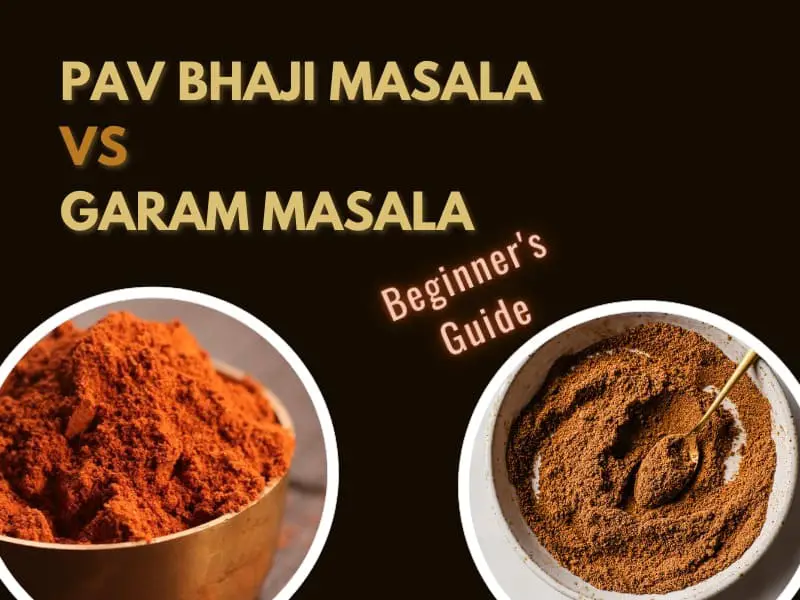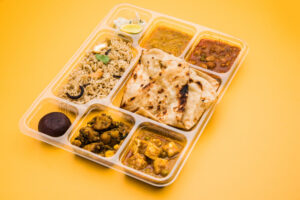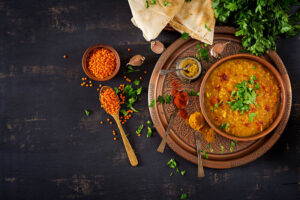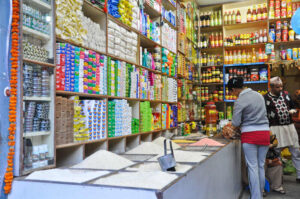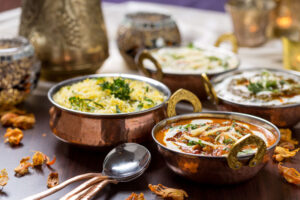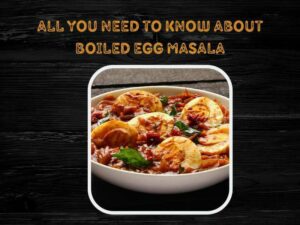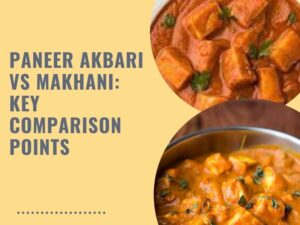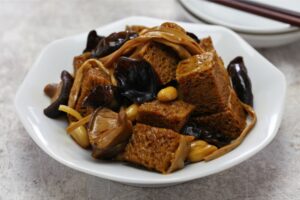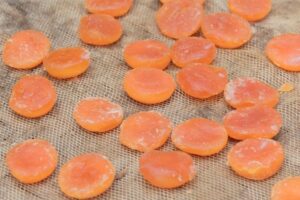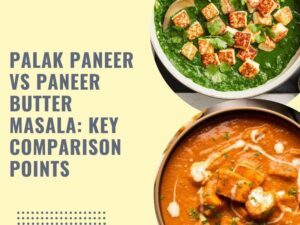Pav bhaji masala and garam masala are two of the most versatile spices in Indian cuisine that have become a staple in Indian kitchens. Here is a beginner’s guide to understanding the differences and similarities of pav bhaji masala vs garam masala along with a homemade recipe. Let’s begin!
What Is Pav Bhaji Masala?
Pav bhaji, the beloved street food in Maharashtra, is made from a blend of spices called Pav bhaji masala.
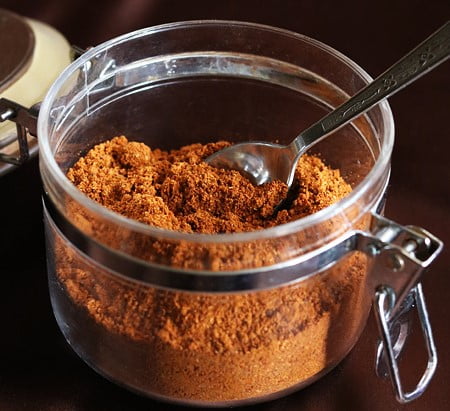
The aroma of Pav Bhaji Masala powder comes from spices like star anise, cardamom, and cinnamon, and its earthiness comes from bay leaves. Red chili is used to give both color and spice to the pav bhaji masala.
Pav Bhaji Masala can be used to make some snacks for chai time! It can also be used in making masala pav, paneer dishes, idli dosa, etc.
Chaat masala is also famously used in many Indian street foods. Check out this article on chaat masala vs garam masala to know more!
What Is Garam Masala?
Garam masala is an aromatic spice blend used to season dishes and add an array of flavors and fragrances to your meal. The blend brings warmth, sweetness, and floral notes to your cooking!
Garam masala is an aromatic spice blend used to season dishes and add an array of flavours and fragrances to your meal. The blend brings warmth, sweetness and floral notes to your cooking! ????????
— Red Rickshaw (@redrickshawfood) January 14, 2022
It originated in Northern India, which gets exceptionally cold during winters. This blend of spices was created to raise the body temperature and keep people cozy during the winter, and so many recipes would be incomplete without the oomph of garam masala!
Here is also some information on sambar masala vs garam masala to learn more about Indian spices and cuisine!
Is Pav Bhaji Masala The Same As Garam Masala?
When it comes to pav bhaji masala vs garam masala, both have similar base ingredients.
| Pav Bhaji Masala | Garam Masala |
| Dry red chili | Coriander seeds |
| Coriander seeds | White and black cumin seeds |
| Cumin seeds | Black cardamom |
| Black cardamom | Black pepper |
| Black peppercorns | Cinnamon stick |
| Cinnamon stick | Green cardamom |
| Green cardamom | Cloves |
| Cloves | Star anise |
| Star anise | Mace |
| Bay leaves | Bay leaves |
| Fennel seeds | Fennel seeds |
| Dry mango powder | Small nutmeg |
| Dry ginger powder | Byadgi red chili (optional) |
| Asafoetida | |
| Turmeric |
As you can see, the base ingredients are similar in both the spice blends, but it is the different combinations of other spices added as well as the varying proportion of spices used, that sets them both apart.
Biryani masala also has the same ingredients as garam masala but in different proportions. Check out this article on biryani masala vs garam masala to know more!
What Is The Difference Between Pav Bhaji Masala And Garam Masala?
Some of the biggest differentiating factors for pav bhaji masala vs garam masala are taste, texture, smell, and color.
Let’s take a detailed look at each of them:
Color
Pav bhaji masala is made by adding dried red chilies to the grind, which gives it a vibrant red-orange color.
Garam masala looks golden-brown. Although some recipes call for the use of red chilies, which give it a red color.
Taste
Pav bhaji masala contains dried mango powder, which makes the masala slightly sour. It is spicy but not too much. And you will taste woodiness due to the presence of the skin of star anise, bay leaf, and coriander seeds.
Garam masala is a very nuanced spice blend with multiple layers of flavor. Cinnamon adds sweetness to it, nutmeg adds complexity, cumin adds an earthy flavor, and peppercorns add the heat.
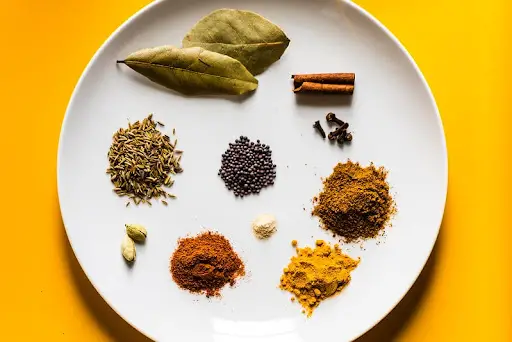
Smell
Pav bhaji masala has a pungent smell due to the addition of aromatics and spicy red chilies. It has floral notes due to the aromatics used in it. And earthiness from bay leaves.
Garam masala has an earthy and aromatic smell. Black cardamom, peppercorns, bay leaves, and cinnamon stick add earthiness to the blend. Whereas fragrant spices like green cardamom, cloves, star anise, and mace give off a floral aroma.
Grind
Garam masala is usually a finely ground powder. After you blend it to a fine powder, sieve the blend to ensure there are no lumps. Grind the coarse particles again until smooth.
Pav bhaji masala powder is also a fine powder but you don’t have to sieve it. You can leave the coarse particles in.
Garam Masala vs Pav Bhaji Masala: The Method Of Preparation
We have uncovered everything about these unique spice blends in this guide to pav bhaji masala and garam masala. Now, let’s find out how to make them from scratch!
But before we look at the cooking instructions, here are some things you need to do to prep for the recipe:
- Collect all the spices in one place and clean them all. Cleaning the spices and removing all the dirt and debris ensures a longer shelf life.
- Wipe the bay leaves and cinnamon stick with a dry or damp cloth.
- Look through the spices and discard any debris you see.
- Check the nutmeg for worms.
Homemade Pav Bhaji Masala Recipe
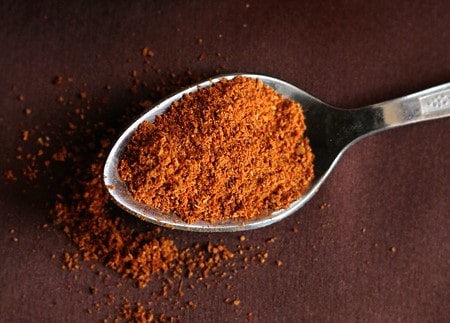
The preparation time for this recipe is 5 minutes and the cooking time is 10 minutes.
Ingredients required:
- 5-6 dried red chilies
- Coriander seeds- 3 tbsp
- Cumin seeds- 2 tbsp
- Black peppercorns- 2 tsp
- Cinnamon stick- 3-inch
- 10 cloves
- Fennel seeds- 1 tbsp
- Black cardamoms- 2
- Dried mango powder- 1 tbsp
- 2-star anise
- Green cardamom- 4
- 2 bay leaves
- Dried ginger powder- ½ tsp
- Turmeric- ½ tsp
- Salt to taste
Cooking instructions:
- Take a pan and put in the dried red chilies, coriander seeds, cumin seeds, and fennel seeds. Add the salt to lock in the moisture. Roast them until the coriander seeds turn light brown, and then transfer them to a plate to cool off.
- Now, to the same pan, add cinnamon, black cardamoms, bay leaves, cloves, black peppercorns, star anise, and green cardamoms. Roast until the spices are aromatic.
- When all the spices have cooled off, transfer them to a blender. Add dried mango powder, ginger powder, and turmeric. Blend them to a powder.
- And voila! You have made pav bhaji masala from scratch.
Check out this simple video recipe on how to make pav bhaji masala.
Homemade Garam Masala
The preparation time for this recipe is 10 minutes and the cooking time is 10 minutes as well.
Ingredients needed:
- 1 cup coriander seeds
- White cumin seeds- 3 tsp
- Black cumin seeds- 1 tsp
- 3 black cardamoms
- 9-10 green cardamoms
- Black peppercorns- 2 tbsp
- 2-inch cinnamon stick
- 8-10 cloves
- 1-star anise
- 2 mace
- 2 bay leaves
- 4-5 byadgi red chili (optional)
- ½ tsp salt
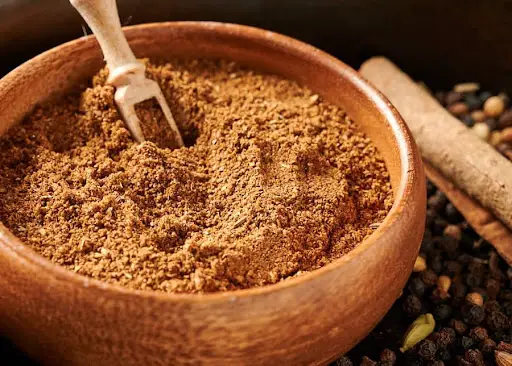
Cooking instructions
- Add coriander seeds to a pan and roast them lightly. Transfer them to a plate when fragrant.
- Add cumin seeds to the same pan and roast them too. Keep aside to cool off.
- Now add all the remaining spices to the pan and roast them on medium-high flame.
- Let them cool properly and blend them into a fine powder.
Transfer the masala to an airtight container and store it in a dry place for the best flavor.
Here is Chef Marcus Samuelsson’s famous Garam Masala Pumpkin recipe, recommended by the Washington Post.
Can I Use Garam Masala Instead Of Pav Bhaji Masala?
Pav bhaji gets its distinct taste from the pav bhaji masala. It is mild in flavor with a pronounced tang. But, if you are in a bind and cannot get the ingredients to make pav bhaji masala from scratch, you can substitute it with garam masala.
With the garam masala, you should add paprika for the spice and a squeeze of lime for tanginess.
It won’t taste exactly like the authentic pav bhaji that is found in the streets of Mumbai, but it will still taste pretty good!
